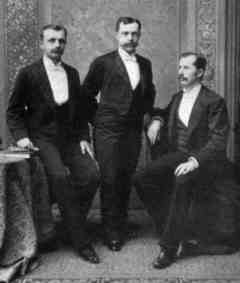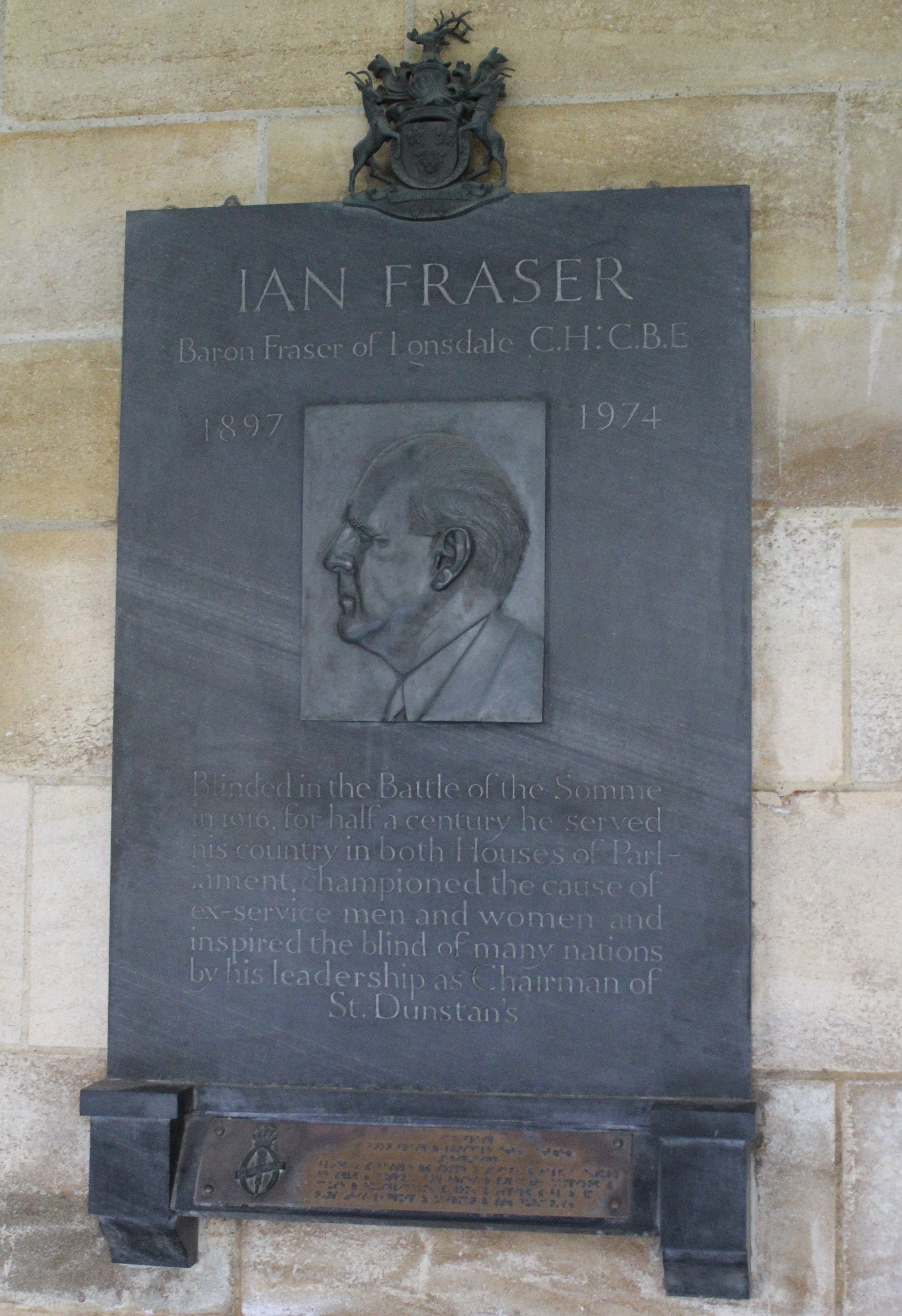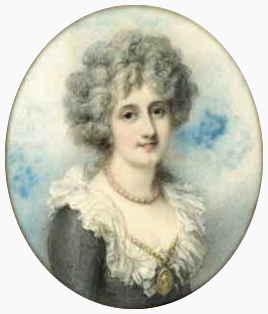|
Winfield House
Winfield House is an English townhouse in Regent's Park, central London and the official residence of the United States Ambassador to the United Kingdom. The grounds are , the second-largest private garden in London after that of Buckingham Palace. The house was built for American heiress Barbara Woolworth Hutton in 1936 on the former Hertford–St. Dunstan estate that had been damaged by fire. During the Second World War, the estate was used by the Royal Air Force. Hutton donated it to the United States after the war, and since 1955 it has been the American ambassador's residence. The house is Grade II listed by Historic England as an "exceptional ambassador's residence and as a notable Neo-Georgian town house containing numerous features of note." Hertford Villa The first house on the site was Hertford Villa, the largest of the eight villas originally constructed in Regent's Park, pursuant to the development scheme of John Nash. This house was designed by Decimus Burton ... [...More Info...] [...Related Items...] OR: [Wikipedia] [Google] [Baidu] |
Neo-Georgian Style (Great Britain)
Georgian architecture is the name given in most English-speaking countries to the set of architectural styles current between 1714 and 1830. It is named after the first four British monarchs of the House of Hanover—George I, George II, George III, and George IV—who reigned in continuous succession from August 1714 to June 1830. The so-called great Georgian cities of the British Isles were Edinburgh, Bath, pre-independence Dublin, and London, and to a lesser extent York and Bristol. The style was revived in the late 19th century in the United States as Colonial Revival architecture and in the early 20th century in Great Britain as Neo-Georgian architecture; in both it is also called Georgian Revival architecture. In the United States the term "Georgian" is generally used to describe all buildings from the period, regardless of style; in Britain it is generally restricted to buildings that are "architectural in intention", and have stylistic characteristics that are typical of ... [...More Info...] [...Related Items...] OR: [Wikipedia] [Google] [Baidu] |
Listed Building
In the United Kingdom, a listed building or listed structure is one that has been placed on one of the four statutory lists maintained by Historic England in England, Historic Environment Scotland in Scotland, in Wales, and the Northern Ireland Environment Agency in Northern Ireland. The term has also been used in the Republic of Ireland, where buildings are protected under the Planning and Development Act 2000. The statutory term in Ireland is " protected structure". A listed building may not be demolished, extended, or altered without special permission from the local planning authority, which typically consults the relevant central government agency, particularly for significant alterations to the more notable listed buildings. In England and Wales, a national amenity society must be notified of any work to a listed building which involves any element of demolition. Exemption from secular listed building control is provided for some buildings in current use for wor ... [...More Info...] [...Related Items...] OR: [Wikipedia] [Google] [Baidu] |
Winfield Hall
Woolworth Estate is a historic estate located at Glen Cove in Nassau County, New York. It was designed in 1916 by architect C. P. H. Gilbert (1861–1952) for Frank Winfield Woolworth (1852–1919). The estate consists of the main residence, known as Winfield Hall; a large garage with remodeled living quarters; a main entrance arch; two greenhouses; and various landscape features including a tea house. Winfield Hall When his current home was destroyed by a mysterious fire, Woolworth immediately went to work on building Winfield Hall, the plans for which were already drawn. With walls and pillars of marble, the house ended up costing nine million dollars, the grand staircase alone costing two million dollars. The house is an Italian Renaissance style, marble covered residence with a five bay wide central mass and flanking four bay wide wings. It features a one bay central entrance portico and flat roof. ''Note:'' This includes an''Accompanying 15 photographs''/ref> After the W ... [...More Info...] [...Related Items...] OR: [Wikipedia] [Google] [Baidu] |
Frank Winfield Woolworth
Frank Winfield Woolworth (April 13, 1852 – April 8, 1919) was an American entrepreneur, the founder of F. W. Woolworth Company, and the operator of variety stores known as "Five-and-Dimes" (5- and 10-cent stores or dime stores) which featured a selection of low-priced merchandise. He pioneered the now-common practices of buying merchandise directly from manufacturers and fixing the selling prices on items, rather than haggling. He was also the first to use self-service display cases, so that customers could examine what they wanted to buy without the help of a sales clerk. Early life Woolworth was born in Rodman, New York to John (1821–1907) and Fanny (née McBrier; 1832–1878) Woolworth; his brother was entrepreneur Charles Sumner Woolworth (1856–1947). His parents were devout Methodists and sympathetic to the Northern side during the Civil War, and they raised their sons in those beliefs.Plunkett-Powell, Karen. ''Remembering Woolworth's: a nostalgic history of the ... [...More Info...] [...Related Items...] OR: [Wikipedia] [Google] [Baidu] |
Destruction Of Country Houses In 20th-century Britain
The destruction of country houses in 20th-century Britain was the result of a change in social conditions: many country houses of varying architectural merit were demolished by their owners. Collectively termed by several authors "the lost houses", the destruction of these now often forgotten houses has been described as a cultural tragedy. The British nobility had been demolishing some of their country houses since the 15th century, when comfort replaced fortification as an essential need. For many, demolishing and rebuilding their country homes became a lifelong hobby, in particular during the 18th century when it became fashionable to take the Grand Tour and return home with art treasures, supposedly brought from classical civilizations. During the 19th century, many houses were enlarged to accommodate the increasing numbers of servants needed to create the famed country house lifestyle. Less than a century later, this often meant they were of an unmanageable size. In the ea ... [...More Info...] [...Related Items...] OR: [Wikipedia] [Google] [Baidu] |
Ian Fraser, Baron Fraser Of Lonsdale
William Jocelyn Ian Fraser, Baron Fraser of Lonsdale, (30 August 1897 – 19 December 1974) was a British Conservative Party politician, a Governor of the BBC, a successful businessman and the first person to be awarded a life peerage under the Life Peerages Act 1958. Fraser was blinded in World War I and became Chairman of St Dunstan's, a charity for blind servicemen. Early life and war injury Fraser was the son of William Percy Fraser, a businessman of South Africa, who played a role in the development of Johannesburg. He was born in Eastbourne, England but spent his early years in South Africa. He returned to England and was educated at St Cyprian's School Eastbourne and Marlborough College. He went to the Royal Military College, Sandhurst, at the start of World War I and in the spring of 1916, he was sent out to join the army in France where he was a captain in the King's Shropshire Light Infantry. At the Battle of the Somme on 23 July 1916, a German bullet blinded him ... [...More Info...] [...Related Items...] OR: [Wikipedia] [Google] [Baidu] |
Blind Veterans UK
Blind Veterans UK, formerly St Dunstan's, is a large British charity, providing free support and services to vision-impaired ex-Armed Forces and National Service personnel. Blind Veterans UK is a registered charity in England and Scotland and operates throughout the United Kingdom. It has its head office in London and centres in Brighton, Sheffield and Llandudno. Description Established in 1915, Blind Veterans UK provides free services and lifelong support to ex-Service men and women with visual impairments. Its specialist services promote and enable these veterans to regain their independence, meet new challenges and achieve a better quality of life. Blind Veterans UK supports anyone who has served in the British Armed Forces and is experiencing sight loss (be that due to age, accident or illness), and the charity's duty of care extends to all beneficiaries and their families for life. Blind Veterans UK has pioneered many advances in care for the blind and partially sighted; fo ... [...More Info...] [...Related Items...] OR: [Wikipedia] [Google] [Baidu] |
Harold Harmsworth, 1st Viscount Rothermere
Harold Sidney Harmsworth, 1st Viscount Rothermere, (26 April 1868 – 26 November 1940) was a leading British newspaper proprietor who owned Associated Newspapers Ltd. He is best known, like his brother Alfred Harmsworth, later Viscount Northcliffe, for the development of the ''Daily Mail'' and the ''Daily Mirror''. Rothermere was a pioneer of popular tabloid journalism. Two of Rothermere's three sons were killed in action during the First World War and in the 1930s, he advocated instead peaceful relations between Germany and the United Kingdom, and used his media influence to that end. His open support for fascism and praise for Nazism and the British Union of Fascists contributed to the popularity of those views in the 1930s. That ambition, for which Rothermere became best known, was not successful, and he died in Bermuda early in the war. Background Harmsworth was the second son of Alfred and Geraldine Mary Harmsworth. His thirteen siblings included Alfred Harmsworth, ... [...More Info...] [...Related Items...] OR: [Wikipedia] [Google] [Baidu] |
Otto Hermann Kahn
Otto Hermann Kahn (February 21, 1867 – March 29, 1934) was a German-born American investment banker, collector, philanthropist, and patron of the arts. Kahn was a well-known figure, appearing on the cover of ''Time'' magazine and was sometimes referred to as the "King of New York". In business, he was best known as a partner at Kuhn, Loeb & Co. who reorganized and consolidated railroads. In his personal life, he was a great patron of the arts, where among things, he served as the chairman of the Metropolitan Opera. Life and career Otto was born on February 21, 1867, in Mannheim, Germany, and raised there, by his Jewish parents, Emma (née Eberstadt) and Bernard Kahn. His father had been among the refugees to the United States after the revolution of 1848 and had become an American citizen, but later returned to Germany. Kahn was educated in a gymnasium in Mannheim. Kahn's ambition was to be a musician, and he learned to play several instruments before he graduated from the ... [...More Info...] [...Related Items...] OR: [Wikipedia] [Google] [Baidu] |
St Dunstan-in-the-West
The Guild Church of St Dunstan-in-the-West is in Fleet Street in the City of London. It is dedicated to Dunstan, Bishop of London and Archbishop of Canterbury. The church is of medieval origin, although the present building, with an octagonal nave, was constructed in the 1830s to the designs of John Shaw. History Medieval church It is first mentioned in written records in 1185. But there is no evidence of the date of its original foundation. There is speculation that it might have been erected by Dunstan himself, or by priests who knew him well. Others suggest a foundation date of between AD 988 (death of St Dunston) and 1070. Another speculation is that a church on this site was one of the ''Lundenwic'' strand settlement churches, like St Martin in the Fields, the first St Mary le Strand, St Clement Danes and St Bride's, which may pre-date any within the walls of the City of London. King Henry III gained possession of it and its endowments from Westminster Abbey ... [...More Info...] [...Related Items...] OR: [Wikipedia] [Google] [Baidu] |
Georgian Architecture
Georgian architecture is the name given in most English-speaking countries to the set of architectural styles current between 1714 and 1830. It is named after the first four British monarchs of the House of Hanover— George I, George II, George III, and George IV—who reigned in continuous succession from August 1714 to June 1830. The so-called great Georgian cities of the British Isles were Edinburgh, Bath, pre-independence Dublin, and London, and to a lesser extent York and Bristol. The style was revived in the late 19th century in the United States as Colonial Revival architecture and in the early 20th century in Great Britain as Neo-Georgian architecture; in both it is also called Georgian Revival architecture. In the United States the term "Georgian" is generally used to describe all buildings from the period, regardless of style; in Britain it is generally restricted to buildings that are "architectural in intention", and have stylistic characteristics that are typica ... [...More Info...] [...Related Items...] OR: [Wikipedia] [Google] [Baidu] |
Francis Seymour-Conway, 3rd Marquess Of Hertford
Francis Charles Seymour-Conway, 3rd Marquess of Hertford, (11 March 1777 – 1 March 1842), styled Viscount Beauchamp between 1793 and 1794 and Earl of Yarmouth between 1794 and 1822, of Ragley Hall in Warwickshire and of Sudbourne Hall in Suffolk, was a British Tory politician and art collector. Origins Seymour-Conway was the son of Francis Seymour-Conway, 2nd Marquess of Hertford, by his second wife Isabella Anne Ingram, eldest daughter and co-heiress of Charles Ingram, 9th Viscount of Irvine. Political career Lord Yarmouth sat as a Member of Parliament (MP) for Orford in Suffolk (which town was situated within his Sudbourne estate) from 1797 to 1802, for Lisburn from 1802 to 1812, for Antrim from 1812 to 1818 and for Camelford from 1820 to 1822. He served as Secretary of State for War and the Colonies Viscount Castlereagh's second during his 1809 duel with Foreign Secretary George Canning. In March 1812 he was sworn of the Privy Council and appointed Vice-Chamberlain ... [...More Info...] [...Related Items...] OR: [Wikipedia] [Google] [Baidu] |







.jpg)

